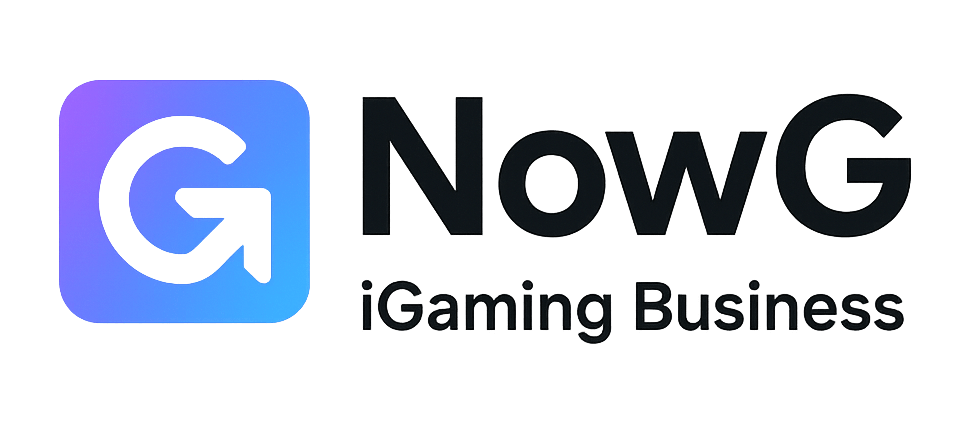Last Updated on October 29, 2025 by Caesar Fikson
Launching an affiliate program without signing your life away to monthly license fees is possible. The lever is open source affiliate tracking software—self-hosted trackers you control, customize, and scale on your terms.
I cut my teeth on these stacks when I was young and broke: shared hosting, a scrappy PHP tracker, cron jobs, and a prayer. It taught me two permanent truths: open source buys you freedom, and freedom comes bundled with responsibility.
Below is a pragmatic, operator-level guide to your options in 2026, with extra context for iGaming teams that need multi-GEO, S2S postbacks, and ironclad reconciliation.
What You Actually Get with Open Source Tracking?
At the core, these projects do three jobs: attribute clicks to conversions, compute commissions from rules, and expose portals or APIs for affiliates and managers. Most are LAMP or Node stacks that log click IDs, pass them through server-to-server (S2S) postbacks, and reconcile orders against refunds and chargebacks.
Compared with SaaS, you keep the database, define attribution windows, and can wire unusual commission logic (hybrid CPA+rev share, SKU exclusions, tiered ladders). The flip side is owning patches, uptime, and fraud defenses.
For iGaming, you also shoulder regulatory hygiene: audit trails, negative carryover handling, and controllable reporting for local licensing audits.
Who Should Choose Open Source in 2026?
Choose self-hosted when you’re validating a new program on a tight budget, when data sovereignty matters (finance, iGaming, health), or when your commission rules are so bespoke that off-the-shelf tools keep saying “we’ll add that to our roadmap.” Stick to SaaS if you can’t maintain a server, if you need enterprise fraud analytics on day one, or if global tax and payouts make you queasy.
My own pattern is hybrid: start open to prove unit economics, migrate a brand to hosted when scale and risk justify it, keep another brand on open source because we can iterate faster in code than any vendor sprint.
💡 Key Insight: Open-source trackers give you control over data and customization but require you to manage security, updates, and compliance. Start with them for flexibility; switch to SaaS when operational complexity outweighs cost savings.
Deep Dives on the Main Open Source Options
I’ve grouped the projects I’ve deployed, audited, or at least battle-tested on staging VMs. Where claims are vague, I lean on my logs, not marketing pages.
eLitius
What it is: An affiliate manager built on the Subrion CMS. You get a merchant backend, affiliate portal, Smarty templates, and integrations that play nicely with WooCommerce and Magento. It’s comfortable for content-plus-commerce businesses that want the portal themed to match the site.
How it installs: PHP & MySQL. Install Subrion, add the eLitius plugin/module, configure currencies and commission rules, drop a conversion pixel or, better, wire an S2S postback from your checkout. I’ve run this on a $10 VPS and later on a beefier VM with MariaDB.
Where it shines: The templating is pragmatic. I re-skinned the affiliate portal in an afternoon so it felt first-party. Rule logic is flexible enough for per-category percentages and coupon-based attribution, which helps when influencers rely on codes. For iGaming leadgen, we used subIDs (s1, s2) to carry campaign and GEO, then split revenue reports per regulator.
Limitations: The UI is dated. Reporting is adequate but not interactive; we exported CSVs into a warehouse for trending. Under spikes, MySQL table scans bit us until we added composite indexes on (affiliate_id, created_at) and (click_id, status). You’ll need to harden PHP, lock admin by IP, and schedule backups.
Fit for iGaming: Good for affiliate-driven registrations and FTD attribution with S2S postbacks. We scripted negative carryover handling monthly, and added a “probation” status for new affiliates so finance could review high-velocity signups before payouts.
💡 My Tip: Prioritize S2S postbacks over pixels for eLitius to ensure accurate attribution, especially for iGaming. Theme the portal early to build trust with affiliates.
Weferral
What it is: A modern, open project aimed at referrals and affiliates. The portal is clean, lifetime and recurring commissions are native, and it’s influencer-friendly out of the box.
How it installs: Node & Postgres. Clone the repo, configure env variables, run migrations, and front it with Nginx. Deployment is smoother on a PaaS if you’re new to Node.
Where it shines: Fast to brand and launch. On a DTC SaaS, we had it tracking within a day, including a first-party JS snippet and S2S for the real attribution. Recurring commissions paired well with subscription billing.
Limitations: It’s still evolving. We patched edge cases around multi-currency and non-Gregorian financial periods. Advanced fraud signals (velocity, device entropy) will be your job to bolt on.
Fit for iGaming: Better for tipster subscriptions and community referrals than difficult casino tracking. If you adapt it to iGaming, plan your own KYC gates and a rules engine for GEO-specific restrictions.
💡 My Tip: Use Weferral for quick influencer-driven campaigns; add custom fraud checks early if targeting iGaming adjacencies.
Raider
What it is: A self-service affiliate platform that emphasizes customizable dashboards, payout flows, and deep integration with your existing systems.
How it installs: PHP with Composer, .env for secrets, queue workers (Supervisor or systemd) for async postbacks, and scheduled cron for ledger jobs.
Where it shines: Rules. I’ve modeled per-SKU and per-brand tiers, minimum payout thresholds, and hybrid CPA+rev share without hacking core files. Reporting is tidy, and the ledger was precise enough that finance stopped asking for nightly spreadsheets.
Limitations: Initial setup can overwhelm non-devs. Documentation has improved, but you want a small write-up of your attribution schema before you go live. For heavy BI, you’ll still export into a warehouse.
Fit for iGaming: Strong. S2S postbacks, subID chains, and GEO breakdowns are native patterns. We added negative carryover and CPA clawbacks via scheduled jobs and a simple review queue for suspicious spikes.
💡 My Tip: Document your attribution schema before launching Raider to streamline setup and avoid rework. Test negative carryover logic thoroughly for iGaming.
Reflio
What it is: An indie-friendly Rails project that gets you from zero to “we’re tracking” quickly. Think minimal fuss, sensible defaults.
How it installs: Rails app to Heroku-style PaaS or a container on your VPS. Map domains, set webhooks, wire S2S from your checkout.
Where it shines: Speed. We stood up a SaaS referral program in a day, including branded portal and email templates. Great for teams that don’t need exotic commission logic.
Limitations: Light analytics and no fancy fraud tools. For iGaming, you’d need to extend the data model for multi-brand, multi-license reporting and audit trails.
Fit for iGaming: Use for adjacent products (tools, subscriptions, picks). For real-money gaming, plan a more configurable engine.
💡 My Tip: Deploy Reflio for rapid MVPs in non-core iGaming products; extend the data model early if targeting regulated markets.
JROX Affiliate Manager (JAM)
What it is: A mature, feature-rich affiliate manager with multi-level support, coupon & code tracking, and an API. It’s old-school in looks, but it has run quietly for years for a lot of merchants.
How it installs: PHP wizard installer, MySQL, cron jobs for recurring tasks (invoicing, carryover), SMTP setup for comms.
Where it shines: Stability and breadth. We plugged JAM into a multi-store environment, tracked coupon attribution for influencer-heavy launches, and managed sub-affiliate ladders without drama.
Limitations: Interface feels dated; plan to re-skin templates for your affiliates. You need disciplined patching and IP-restricted admin to keep it safe.
Fit for iGaming: Solid workhorse for casino and sportsbook affiliate programs that want predictable ledgers, reliable negative carryover, and monthly aggregation by GEO and brand.
💡 My Tip: Re-skin JAM’s affiliate portal early to boost affiliate trust; schedule regular security patches to keep it robust for iGaming.
Affiliates for WordPress
What it is: A GPL plugin family that tracks referrals within WordPress, especially seamless with WooCommerce. If your store and content are already on WP, this is the easiest lift.
How it installs: Install and activate the plugin, add shortcodes/blocks for registration and portals, and wire referral rates per product or category.
Where it shines: Non-technical teams can manage day-to-day. For content-to-cart models, it’s hard to beat the convenience. We’ve shipped fast with this for merch drops and spin-off products.
Limitations: You’re bound to WordPress. If your checkout is headless or external, integration becomes trickier. Heavy traffic requires the usual WP scaling playbook (object cache, optimized DB, CDN).
Fit for iGaming: Not ideal for real-money casino tracking. Use it around the edges (VIP club merch, content memberships) while your main program runs on a dedicated tracker.
💡 My Tip: Use Affiliates for WordPress for quick content-driven campaigns; ensure your WP stack is optimized for scale if traffic spikes.
osAffiliate
What it is: A lightweight PHP tracker with the basics: click logging, conversion tracking, commission assignment, and simple exports.
How it installs: Upload files, run an installer, point a conversion pixel or S2S postback from your confirmation event.
Where it shines: Perfect for proof-of-concept phases. I’ve used it to test whether a niche even deserves a full program before investing more time.
Limitations: Rudimentary roles and reporting. You’ll outgrow this if you need multi-brand, multi-currency, or granular cohort analytics.
Fit for iGaming: Sandbox tool for validating a new GEO or vertical with a handful of trusted partners before you roll out the big guns.
💡 My Tip: Deploy osAffiliate for quick validation of new niches; switch to a robust tracker like Raider for production iGaming programs.
PeerClick Open Core
What it is: A campaign and offer tracker with a free community edition. It’s popular among media buyers and affiliates who need routing, split testing, and bot filtering.
How it installs: Provision a Linux VM, install from repo, map tracking domains, set up postbacks and traffic sources.
Where it shines: Traffic ops. Route by GEO or device, filter known bot patterns, compare landing pages, and stitch together flows across multiple networks. For arbitrage or paid social into casino leadgen, it’s excellent.
Limitations: Some power features are gated to pro licenses. The learning curve is real; it’s a traffic tool first, an “affiliate manager” second.
Fit for iGaming: Strong for media-buying teams pushing to operator funnels, especially when you need to protect budgets from junk traffic and measure EV per GEO. Pair it with a ledger-grade manager for payouts.
💡 My Tip: Pair PeerClick with a dedicated payout manager for iGaming; focus on its traffic routing strengths to fine-tune leadgen campaigns.
Skro Open Core
What it is: A modern tracker with real-time stats, multi-currency, rich reporting, and cookieless options. Designed for teams that live in spreadsheets and crave deeper breakdowns.
How it installs: Hybrid model. You can self-host an open core or run a managed instance. Connect sources, define metrics, and map payout schemas.
Where it shines: Visibility. Breaking down ROI by GEO, device, creative, and hour is fast, and multi-currency reporting means finance doesn’t have to recalc outside the tool.
Limitations: The sheer depth can overwhelm smaller programs. Governance—who can see what—needs planning before you invite a hundred partners.
Fit for iGaming: Excellent for multi-brand operators running cross-border campaigns. We’ve used it to reconcile media spends to FTDs and NGR by GEO and to call out anomalies before they became expensive.
💡 My Tip: Configure Skro’s reporting early to leverage its multi-currency and GEO analytics; plan governance roles to manage data access for larger programs.
Limitations of “Free” and Open Source You Should Budget For
Maintenance: You own patches. That means OS updates, library CVEs, and the tracker’s own releases. On one brand, we scheduled monthly OS updates and quarterly app upgrades with staging smoke tests. It’s civilized, but it’s still work.
Security: Source code is visible, which is both good (auditability) and risky (attackers can study it). Harden the stack, restrict admin to VPN or IP allowlists, rotate secrets, and put a WAF in front. When I was starting out, I treated security as optional; a botnet’s credential-stuffing taught me otherwise.
Fraud analytics: Out of the box, most open projects do not ship device graphs, behavioral scoring, or affiliate reputation networks. You’ll start with basic velocity rules, duplicate checks, and manual reviews. It’s fine at small scale; beyond that, either invest in your own rules engine or add a specialized service.
Advanced payouts: Global payouts with tax docs, local compliance, and reconciliation are rarely plug-and-play. Expect CSV exports into PayPal/Payoneer/Wise early on, or build an ACH integration. For iGaming, negative carryover & CPA clawbacks must be explicit and testable—auditors will ask.
Support: Community forums can be great, but they are not an SLA. If you go this route for a licensed operation, plan for an on-call rotation or a retainer with a dev who knows your stack.
💡 Key Insight: Budget for maintenance and security when choosing open source; the “free” price tag trades license fees for time and technical ownership.
Benefits Specific to iGaming Programs
Data sovereignty for regulators: Keeping click and conversion data in your own database simplifies audits. We isolated license-specific data on separate schemas and had point-in-time restore ready for inspections.
Custom attribution & compliance: You can codify GEO-specific rules, bonus abuse protections, self-exclusion logic, and brand-level ladders that off-the-shelf tools often treat as edge cases. That included shorter cookie windows for coupon affiliates to prevent last-click hijacks and probation statuses for new partners pending KYC.
First-party tracking under privacy pressure: Safari’s ITP and ad blockers are hostile to third-party scripts. S2S postbacks tied to your first-party IDs keep your attribution accurate and payout disputes minimal. We keep client-side JS purely for view-through analytics, never as the source of truth for money.
Cost control in volatile markets: When a GEO turns unprofitable, pausing a SaaS license isn’t always possible. On self-hosted, you can hibernate a brand’s instance and bring it back later at minimal cost.
Implementation Notes from the Trenches
I like a simple architecture: Nginx in front, PHP-FPM or Node behind, MariaDB or Postgres, Redis for queues and caching. S2S postbacks are non-negotiable. Every conversion carries the original click_id, affiliate_id, subIDs for campaign and GEO, currency, and net revenue components (stake, bonus, tax) so the ledger can compute exactly what finance expects. Dashboards show near-real-time estimates; finance works off the approved monthly ledger with adjustments for refunds and chargebacks. We expose a modest API to affiliates for transparency while reserving sensitive breakdowns for internal roles.
💡 Pro Tip: Prioritize S2S postbacks and a clean ledger schema in your implementation to minimize payout disputes and simplify audits.
A Brief Comparison Snapshot
| Project | Best for | Effort to Launch | Customization | Fraud Tooling | iGaming Readiness |
|---|---|---|---|---|---|
| eLitius | Content + commerce with themed portal | Moderate | High (Smarty templates) | Basic rules, extendable | Good for FTD & rev share with S2S |
| Weferral | Influencer & SaaS referrals | Fast | Medium | Light, add your own | Adjacencies (picks, tools) |
| Raider | Custom commission engines | Moderate | High (rules, payouts) | Rules-based, extendable | Strong with negative carryover |
| Reflio | Quick MVPs for subscriptions | Fast | Medium | Light | Use around core gaming, not core |
| JROX AM | Stable, long-running programs | Moderate | Medium | Basic + manual review | Reliable ledger & monthly ops |
| Affiliates for WP | WooCommerce stores | Fast | Medium (WP hooks) | Depends on WP stack | Peripheral use cases |
| osAffiliate | Proof-of-concept | Fast | Low | Minimal | Sandbox, not production |
| PeerClick (open core) | Traffic routing & optimization | Moderate | High (flows, split tests) | Strong bot filtering | Great for media buying into casino |
| Skro (open core) | Data-heavy teams | Moderate | High (metrics, currency) | Depends on config | Excellent visibility across GEOs |
So, Is Free Really Free?
Not really. You’ll trade cash for time. On my first production tracker, I spent a weekend hardening SSH, adding rate limits, and reinforcing the ledger so refunds didn’t overpay affiliates. That weekend saved a year of SaaS fees and taught us our numbers inside out. Later, when fraud sophistication and payout complexity climbed, we put one brand on a hosted tracker with device graphs and automated clawbacks because the risk justified it. Freedom means you choose where to spend: code, ops, or licenses.
💡 Key Insight: “Free” open source trackers save on licenses but require time investment in setup, security, and maintenance. Weigh your team’s technical capacity before committing.
FAQ
Which open-source tracker should I start with in 2026?
If you already run WooCommerce and want the fastest path, start with a WordPress affiliate plugin and prove traction. If you need flexible commission rules or iGaming-style ledgers, start with Raider or eLitius on a small VPS. For paid traffic routing into casino funnels, pair PeerClick’s open core with your manager and reconcile via S2S.
How do I make this work for iGaming compliance?
Use server-to-server postbacks tied to your first-party IDs as the payout source of truth. Implement negative carryover and CPA clawbacks explicitly in code. Separate data by brand and license, keep an immutable monthly ledger, and provide exports for auditors. Treat self-exclusion and restricted GEO logic as hard stops in attribution, not guidelines.
What can I do about fraud without enterprise tools?
Start with device and IP rate limits, reject duplicate orders, and quarantine conversions with suspicious time-to-purchase or GEO mismatches. Require KYC for high-earning affiliates and manually review top 10 percent of payouts monthly. As you grow, add a lightweight rules engine and, if needed, a third-party device fingerprinting library.
Can I migrate from self-hosted to SaaS later?
Yes. Keep a clean schema with stable UUIDs, normalize currencies, and export weekly CSVs of affiliates, clicks, conversions, and payouts. When you trial a hosted platform, run both trackers in parallel for one pay period, reconcile by affiliate and SKU, then flip the postback. It’s messy for a week, then life gets easier.
What hidden costs should I expect?
Besides a VPS and backups, expect twenty to forty hours for initial deployment, hardening, and integration, plus a few hours monthly for patches and reviews. If your team lacks ops skills, budget a small retainer for a developer who knows your stack. It’s still cheaper than committing to a platform before you’ve proven ROI.
Will these tools survive privacy changes and ad blockers?
Yes, if you design for it. Keep client-side JS for analytics, but base payouts on server-to-server events. Serve tags from a first-party subdomain and store the minimum data you need. Respect CMP consent for any client cookies and provide data purge tools to satisfy GDPR/CCPA requests.



